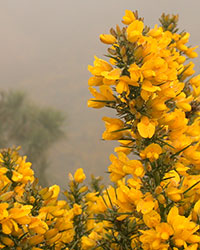What is a weed?
When strategizing to suppress and/or eradicate a plant species we first need to identify that species as a weed. What is the definition of a weed?
A weed is identified from a human perspective as a plant species or community occupying an ecological niche that creates an undesirable effect by its mere presence.
There are a number of examples where “One person's weed is another's fruit!” particularly between groups with shared borders and conflicting land uses (i.e. agriculture and conservation).
How do most invasive species arrive in Hawaii?
Invasive species arrive in Hawaii for many reasons, but by far the most important reason for introduction is horticultural use for ornamental purposes. In fact, this single pathway of entry accounts for approximately 70% of all documented invasive plant species in Hawaii. Other pathways of lesser importance include introductions for use as crops, livestock forage, or forestry species, and accidental introduction of weed seeds as contaminants in other products.
Strategies for weed control
Regardless of the situation, the most progressive weed management strategies are often developed from an integration of affordable techniques that can account for holistic contributions from healthy functioning ecosystems. In the research and development of weed management strategies, a systematic approach can be used for identifying the problem and providing solutions. Here are three steps to one approach:
- Identify the conditions of a healthy environment and those conditions that have been altered by the weed invasion.
- Integrate interventions against the weed with improvements to those altered conditions of the landscape.
- Stabilize the ecosystem to promote the occupation of desirable plant communities to work against reoccurring weed infestations.
Many weed removal operations are in effect fighting the universal law of entropy. In efforts to eradicate infestations, we create gaps or openings that provide a niche that must be occupied. If the surrounding environmental conditions remain altered that niche may continue to provide a competitive advantage to the same weed that occupied it previously. If we can integrate weed removal operations with holistic modifications to the environment we may be able to mitigate weed re-infestation (i.e. soil fertility management). Our best long-term option is to stabilize an environment by providing competitive advantages to desirable plant communities that will become resilient against the unwanted weed occupations.
Our Website
The mission of this web page is to provide novel examples of broad applications in weed management that are being scientifically proven to work in Hawai'i. There will be many examples where herbicide applications are the safest and most effective techniques. However, there are likely to be just as many examples where “organic” solutions give excellent opportunities for improving land management.
Much of the information on this site will be work in progress, so we encourage you to check this page regularly for updates. We also encourage you to provide your own positive inputs and feedback to weed management solutions.
